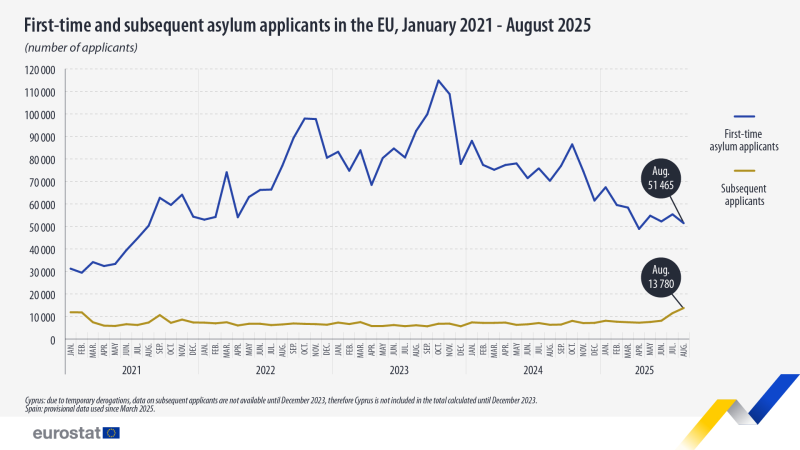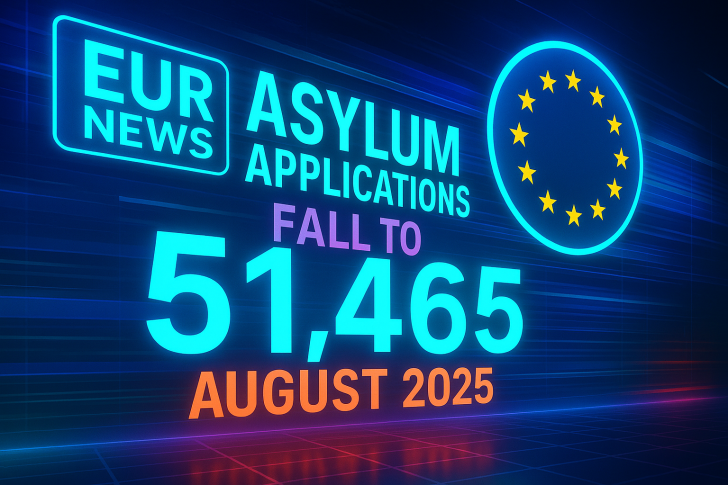⬤ Fresh numbers from Eurostat paint an interesting picture of how asylum requests are changing across the European Union. In August 2025, EU countries processed 51,465 first-time asylum applications, which marks a 7% drop compared to July. The data also tracks patterns going back to 2021, showing how application trends have shifted over the past few years.

⬤ Looking at the bigger picture, first-time asylum applications shot up dramatically between 2021 and 2023—at one point crossing 110,000—before gradually cooling down through 2024 and into this year. August's 51,465 figure continues that downward trend. But here's where things get interesting: subsequent applications are telling a different story. While they're still much smaller in total volume, they've been climbing lately. August hit 13,780, which represents a solid 20% jump from the previous month. Worth noting that Cyprus data for subsequent applicants wasn't available until late 2023, and Spain's been working with provisional numbers since early 2025.
⬤ What really stands out when you look at the data over time is how differently these two categories have behaved. First-time applicants have been all over the map—big spikes followed by cooling periods—while subsequent applicants historically stayed pretty steady at lower levels. That recent bump to 13,780 is actually one of the most noticeable increases we've seen in this category, especially when compared to the ongoing decline in first-time requests throughout most of 2024 and 2025.
⬤ Asylum trends are closely connected to how EU countries handle administrative capacity and plan migration policies. The combination of fewer first-time applicants but more subsequent ones gives us a more complete view of what's actually happening with migration patterns across the EU. These shifts in application categories often hint at deeper changes in conditions across different member states.
 Usman Salis
Usman Salis

 Usman Salis
Usman Salis


